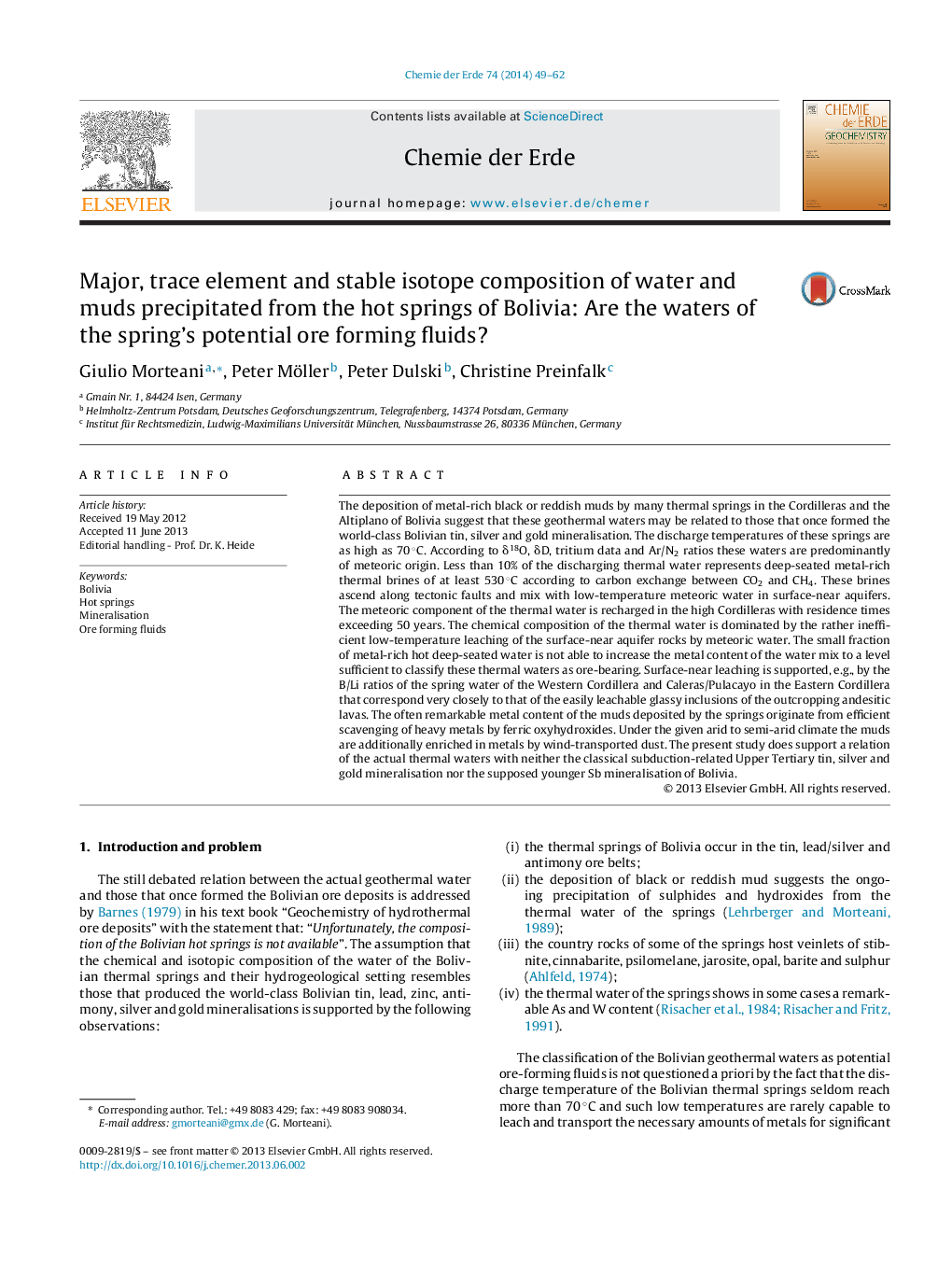| کد مقاله | کد نشریه | سال انتشار | مقاله انگلیسی | نسخه تمام متن |
|---|---|---|---|---|
| 4406914 | 1307331 | 2014 | 14 صفحه PDF | دانلود رایگان |
عنوان انگلیسی مقاله ISI
Major, trace element and stable isotope composition of water and muds precipitated from the hot springs of Bolivia: Are the waters of the spring's potential ore forming fluids?
ترجمه فارسی عنوان
عمده، عنصر ریاضی و ترکیبات ایزوتوپ پایدار از آب و گلدان ها از چشمه های گرم بولیوی پیشی گرفته است: آیا آبهای سنگین بالقوه بهار تشکیل دهنده مایعات هستند؟
دانلود مقاله + سفارش ترجمه
دانلود مقاله ISI انگلیسی
رایگان برای ایرانیان
کلمات کلیدی
بولیوی، چشمه های آب گرم، معدنی شدن، مایع تشکیل مایع،
موضوعات مرتبط
مهندسی و علوم پایه
علوم زمین و سیارات
ژئوشیمی و پترولوژی
چکیده انگلیسی
The deposition of metal-rich black or reddish muds by many thermal springs in the Cordilleras and the Altiplano of Bolivia suggest that these geothermal waters may be related to those that once formed the world-class Bolivian tin, silver and gold mineralisation. The discharge temperatures of these springs are as high as 70 °C. According to δ18O, δD, tritium data and Ar/N2 ratios these waters are predominantly of meteoric origin. Less than 10% of the discharging thermal water represents deep-seated metal-rich thermal brines of at least 530 °C according to carbon exchange between CO2 and CH4. These brines ascend along tectonic faults and mix with low-temperature meteoric water in surface-near aquifers. The meteoric component of the thermal water is recharged in the high Cordilleras with residence times exceeding 50 years. The chemical composition of the thermal water is dominated by the rather inefficient low-temperature leaching of the surface-near aquifer rocks by meteoric water. The small fraction of metal-rich hot deep-seated water is not able to increase the metal content of the water mix to a level sufficient to classify these thermal waters as ore-bearing. Surface-near leaching is supported, e.g., by the B/Li ratios of the spring water of the Western Cordillera and Caleras/Pulacayo in the Eastern Cordillera that correspond very closely to that of the easily leachable glassy inclusions of the outcropping andesitic lavas. The often remarkable metal content of the muds deposited by the springs originate from efficient scavenging of heavy metals by ferric oxyhydroxides. Under the given arid to semi-arid climate the muds are additionally enriched in metals by wind-transported dust. The present study does support a relation of the actual thermal waters with neither the classical subduction-related Upper Tertiary tin, silver and gold mineralisation nor the supposed younger Sb mineralisation of Bolivia.
ناشر
Database: Elsevier - ScienceDirect (ساینس دایرکت)
Journal: Chemie der Erde - Geochemistry - Volume 74, Issue 1, March 2014, Pages 49-62
Journal: Chemie der Erde - Geochemistry - Volume 74, Issue 1, March 2014, Pages 49-62
نویسندگان
Giulio Morteani, Peter Möller, Peter Dulski, Christine Preinfalk,
